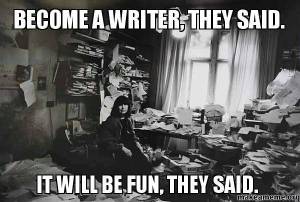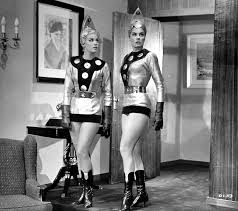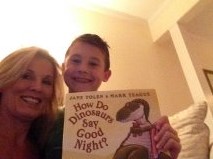Traveling the indie publishing road can be a daunting and lonely journey. For the novice, there are plenty of opportunities to take a wrong turn, stumble, or lose sight of your destination. The entire experience practically begs you to throw yourself an occasional Pity Party, or two, or three.
I have hosted some killer woe-is-me celebrations. Instead of a hangover, these blow outs always leave me in a funk. My last, and most impressive, fete was a month-long celebration after the rush of my book launch abruptly came to a halt. I won’t liken it to post-par tum depression (not out loud anyway), but it was pretty miserable.
Everything leading up to the launch of my book was exhilarating. I had the launch party to plan, books to order, swag to buy. The launch party was a huge success. I sold hundreds of books that month and scheduled a handful of author visits. I received scads of 5-star reviews, and my book was featured on a few blogs. People were buzzing about my book, and I was on cloud nine. Then…crickets. Nothing happened. I went from living and breathing my book to staring at a pile of them. Cue the Pity-Party music and back-up dancers.
Gloom and Doom became my BFF’s. I beat myself up for not selling more books. I couldn’t think of anything to write. And, to make matters worse, I had spent a lot of money on self-publishing a book I was sure would never again see the light of day.
Since I couldn’t write, I read. I went to the library. I started reading picture books again. I found solace in the kid lit community. I read blog posts and articles, tweets and memes.
One of the articles I stumbled upon helped me kick those heifers, Gloom and Doom, to the curb.
The author’s message helped me alter how I perceive my success and allow myself to appreciate the little moments as much as the big ones. That paradigm shift removed a huge roadblock in my writing career-a roadblock constructed by me.
My Pity-Parties are now (mostly) Pinch-Me Parties.
Instead of complaining that only 5 people showed up at my Barnes and Noble author event, I pinch myself. I look around and think, “OMG! My book is on the shelf at Barnes and Noble!” Rather than beating myself up that my online sales are not in the thousands, I take pride knowing a book I wrote is in the hands of hundreds of people around the world.
Not that I’m a masochist, but I kind of like this whole pinching thing. It seems the more I do it, the more “pinch able” moments come my way. My book is on the shelves of several book stores and libraries (pinch). I’ve been interviewed by our local TV and newspaper (pinch, pinch). The Horn Book Magazine reviewed a collection of indie books for the first time in the history of the magazine, and my book was included (bad pinch on that one-Roger Sutton is not a fairy fan). School children in the UK chose to dress up as Dust Fairies (complete with matching dust bunny dolls) for World Book Day (pinch). My book has been a #1 Kindle on Amazon (pinch). I started a successful literacy initiative, and we’ve collected more than 300 books for children of incarcerated parents (pinch).
But, the best “pinches” by far, are all of the incredibly kind, gifted, generous people I have met on this journey. Thanks for your inspiration, humor, and support.
I love hearing from you. Tell me your best pity or pinch party story!
Here’s my original blog post from last December:
I am a writer. I have met a lot of writers. Most of us are very hard on ourselves. Working in solitude affords us the time to self-reflect, which often leads to self-loathing. For many of us, our goals start small…finish a novel, get a book published, get a review, etc. Unfortunately, rather than savoring the small fruits of our labor, we are compelled to reach for the next branch. This New York Times article is a fitting reminder that those clusters of fruit, we take for granted, are a delicacy some will never taste.
As the Eagles proclaimed, “…Now it seems to me, some fine things
Have been laid upon your table
But you only want the ones that you can’t get
Desperado…”
Don’t quit your day dream. Pull up a chair, heap your plate full, and enjoy your fruit-no matter how small.
Thanksgiving Weekend Blues
By HARLAN COBENNOV. 28, 2014
RIDGEWOOD, N.J. — THANKSGIVING weekend in 1990, I spent two hours at the loneliest place in the world for an obscure novelist — the book-signing table at a Waldenbooks in a suburban New Jersey mall.
I sat at the table smiling like a game show host. Store patrons scurried past me, doing all they could to avoid eye contact. I kept smiling. I straightened out my pile of free bookmarks for the umpteenth time, though so far none had been taken. I played with my pen. Authors at signings like this get good at playing with their pens. I pushed it to and fro. I curled my upper lip around the pen and made it into a makeshift mustache. I clipped it to my lower lip, pinching said lip in an almost masochistic way, and was able to click the pen open by moving my jaw and pressing it against my nose. You can’t teach that skill, by the way. Practice. At one point, I took out a second pen, rolled up a spitball, and then let the two pens play hockey against each other. The Rollerball beat the Sharpie in overtime.
During the first hour of my signing, a grand total of four people approached me. Two asked me where the bathroom was. The third explained his conspiracy theory linking the J.F.K. assassination with the decision by General Mills to add Crunch Berries to Cap’n Crunch breakfast cereal. The fourth asked me if we had a copy of the new Stephen King.
I kept smiling. Four copies of my brand-spanking-new first novel — Waldenbooks knew not to order too many — stood limply on the shelf behind me. I missed the Barcalounger in my den. I longed for home and hearth, for stuffing my face with leftover turkey, for half-watching football games in which I had no rooting interest. Instead I slow-baked under the fluorescent Waldenbooks lights, the Early Hipster booksellers glaring at me as though I was some kind of pedantic squatter. I had become the literary equivalent of a poster child — “you could buy his book or you could turn the page …”
Time didn’t just pass slowly. It seemed to be moonwalking backward.
Then, with maybe 15 minutes left before I could scrape up the scraps of my dignity and head home, an old man shuffled toward me. He wiped his nose with what I hoped was a beige hankie. His eyes were runny. Odds were this was going to be a where’s-the-bathroom question, but this guy had all the makings of another conspiracy theorist.
The old man’s gaze drifted over my shoulder. “What’s that like?”
“Excuse me?”
“That’s your novel, right?”
He gestured at the four books on the shelf behind me.
“Right,” I said.
He shook his head in awe. “That’s my dream, man. Seeing my book on a shelf in a bookstore.” He lowered his gaze and met my eye. “So what’s that like?”
I paused, letting the question sink in, but before I could reply, the old man lifted his eyes back to the bookshelf, smiled, and shook his head again. “Lucky,” he said, before turning and walking away.
He didn’t buy a book. He didn’t have to.
Posted by Michelle R. Eastman in amwriting, authors giving back, blogging, indie author, kidlit, Michelle Eastman, Self-Publishing, writers' blues Tags: #1 book, #booknerd, #kidlit, amazon, amwriting, appreciation, author, author support, bestseller, blessed, blogging, book sales, boys' books, children's authors, children's literature, christian, fables, families, favorite bedtime stories, fiction, generosity, grateful, kids' books, kindle, legends, preschool, read aloud, rhyming, self-publishing indie author, top picture book
Pssst – Wanna hear a PODCAST of an author being INTERVIEWED?.
Posted by Michelle R. Eastman in amwriting, authors giving back, blogging, kidlit, Michelle Eastman, new author, new release, Self-Publishing, The Legend of Dust Bunnies, The Legend of Dust Bunnies: a fairy's tale, writing Tags: #booknerd, #kidlit, amwriting, author, blogging, book marketing, book promotion, building a picture book, children's book, children's literature, children's picture book, dust bunnies, entrepreneurs, fables, fairy tale, favorite bedtime stories, generosity, Kevin Richter, kids' books, legend of dust bunnies, michelle eastman, michelleeastmanbooks, moms, read aloud, rhyming picture book, self-published author, self-publishing, starting a blog, writing
A Dusty World Book Day | Sylva Fae.
Posted by Michelle R. Eastman in blogging, costumes, fairies, families, kidlit, Literacy, moms, new author, new release, Self-Publishing, The Legend of Dust Bunnies, World Book Day, writing Tags: author, bedtime stories, blogging, bunnies, children's book, children's literature, children's picture book, dust bunnies, early literacy, fables, fairies, fairy tale, families, favorite bedtime stories, fiction, Kevin Richter, kids' books, legend of dust bunnies, michelle eastman, michelleeastmanbooks, moms, picture book, preschool, read aloud, rhyming picture book, self-published author, top picture book
A Dusty World Book Day | Sylva Fae.
Posted by Michelle R. Eastman in amwriting, blogging, families, kidlit, Literacy, moms, new author, new release, World Book Day, writing Tags: amwriting, author, blogging, children's book, children's literature, children's picture book, dust bunnies, early literacy, fairy tale, families, favorite bedtime stories, fiction, Kevin Richter, kids' books, legend of dust bunnies, michelle eastman, moms, picture book, read aloud, rhyming picture book, self-published author, top picture book
PSA: Book Drive for Children with an Incarcerated Parent.
Posted by Michelle R. Eastman in dads, families, kidlit, kids in need, Literacy, moms, Picture Book Pass it On Tags: #PBPiO, children's book, children's literature, children's picture book, christian, early literacy, fairy tale, favorite bedtime stories, kids' books, moms, picture book, read aloud
The Legend of Dust Bunnies: A Fairy’s Tale by Michelle R. Eastman and Illustrated by Kevin Richter.
Posted by Michelle R. Eastman in families, kidlit, new author Tags: bedtime stories, boys' books, children's book, children's literature, children's picture book, christian, dust bunnies, fairies, fairy tale, favorite bedtime stories, kids' books, legend of dust bunnies, picture book, read aloud, rhyming picture book
The Legend of Dust Bunnies: A Fairy’s Tale by Michelle R. Eastman and Illustrated by Kevin Richter.
Posted by Michelle R. Eastman in book marketing, kidlit Tags: bedtime stories, book promotion, children's book, children's literature, children's picture book, christian, dust bunnies, fairy tale, favorite bedtime stories, legend of dust bunnies, michelleeastmanbooks, top picture book
November is Picture Book Month, and I am celebrating the power of the picture book by starting an initiative called, Picture Book Pass it On (#PBPiO)
According to Reading is Fundamental (RIF), Nearly two-thirds of low-income families in the U.S. DO NOT own books. That is just plain wrong. But, we can help fix it.
I am celebrating the power of the picture book by starting an initiative called, Picture Book Pass it On (#PBPiO)
I hope you will join me by accepting 3 calls to action:
#1 Pledge to donate a new or gently used picture book/s to a children’s charity in your area.
#2 Post about your pledge. Share it on your blog and on social media. Please include our badge and #PBPiO
#3 Pass it on. When you post about your pledge, challenge one or more friends to join your #PBPiO giving chain. Encourage them to take the pledge and keep passing it on…
Oh, and be sure to share your giving story on our Facebook page https://www.facebook.com/PBPiO . We love to see how books are reaching kids all over the globe.
UPDATE: We now have children’s authors in the US, the UK, and Australia passing on autographed copies of their own books to kids in need. How cool is that?!
We are donating a copy of one of our favorite picture books to Joshua Christian Academy.
I am Passing it On to @MulberryAndy
Posted by Michelle R. Eastman in families, kidlit, Literacy, picture book month Tags: #PBPiO, book marketing, children's literature, children's picture book, christian, early literacy, families, favorite bedtime stories
Or, anytime, really. But, it wasn’t until I became a mom that I really began to savor that smell.
To be honest, I never knew it as a child. When I look back at my earliest memories, I recall a lot-good and bad. But, there is not a single memory of anyone reading to or with me. I cannot name a favorite picture book from my childhood; I don’t have one. Picture books were not a top-priority for my teenaged parents. Later, picture books were not on my single-mom’s priority list either. The weird thing is that I never knew what I didn’t have; I wasn’t conscious of the fact that my childhood was devoid of picture books. It wasn’t until my son came along…that it hit me-hard. I’ll never forget that night. We were curled up together, lights dimmed, reading our way through Goodnight Moon for the 100th time. He looked up, and asked me a very simple question, “Mom, what was your favorite bedtime story when you were little?” As I struggled to grasp hold of the memory, I could hear the sound of my tears, dropping onto the pages of the board book. I couldn’t answer; I didn’t have an answer.
Many of us take for granted the sacred ritual of cracking open a picture book, and cuddling together while the words and pictures collectively take us away. You can probably recall having been read to by your parents or caregivers. You likely hold a special picture book, from your childhood, close to your heart. And, until now, you’ve probably not given much thought to how profound that experience can be.
Imagine, never having that.
When I look back on my early childhood memories, I recall a lot-good and bad. But, there is not a single memory of anyone reading to or with me. I cannot name a favorite picture book from my childhood; I don’t have one. Picture books were not a top priority for my teenaged parents. Later, picture books were not on my single-mom’s priority list either.
I guess that’s why picture books hold such a special place in my heart now. Perhaps that’s why, like a starved hyena, I gobble them up. Maybe it’s why I chose to write my own. I know it is why I jump up on my soapbox, touting the power of picture books.
It’s Picture Book Month, people! So, crack open a picture book. Cuddle with your child or loved one. Take a whiff, and enjoy.
Embed from Getty ImagesI started a new literacy initiative called Picture Book Pass it On #PBPiO, giving free books to kids in need. Learn how you can help kids in your area https://michelleeastmanbooks.wordpress.com/about/picture-book-pass-it-on-pbpio/
Share your giving story on our new Facebook page https://www.facebook.com/PBPiO
Posted by Michelle R. Eastman in families, kidlit, Literacy, picture book month Tags: bedtime stories, children's book, children's literature, children's picture book, early literacy, families, favorite bedtime stories
Too many picture books? That’s like saying there are too many flowers.
I am thrilled to count myself among the ranks of children’s picture book writers. I believe, whole-heartedly, in the power of picture books. It’s Picture Book Month. And I am celebrating my favorite genre all month. I am offering a Goodreads Giveaway of my new children’s picture book, The Legend of Dust Bunnies, a Fairy’s Tale. Throughout the month of November, I’ll post tips, links, and articles pertaining to my favorite genre. The following recommendations were adapted from Reading Tips for Parents, developed by the National Center for Family Literacy .
I hope you’ll discover something to enhance your family’s shared reading experiences. Please note that although children may be ready for early readers and chapter books, I implore parents to continue reading picture books with/to your children. There is no better way to connect at the end of a hectic day than to get lost in a picture book together. This ritual is one you can continue well into their teen years (yes, really, I promise). A child should not be denied this sacred time with you, just because he has “grown up”. Reading and/or revisiting picture books is a comforting ritual for children, and picture books have a magical way of opening dialogue and accessing feelings that older children may not otherwise share with you. So, crack open a picture book and enjoy!
Happy Picture Book Month!
An Age-Appropriate Guide to Books:
Your bedtime reading routine will evolve as your child develops physically and intellectually.
Birth to Toddlers
- Developmental Stage: As babies, children learn by using their five basic senses to explore the world. By age 2 years, a child can use his oral language skills to identify objects and communicate ideas.
- Bedtime reading suggestions:
- Sing lullabies and songs.
- Choose picture books with 1 or 2 pictures per page that are clear, simple, and filled with vivid colors. Repetition with these books helps foster language development by creating familiarity and associations.
- Use board or plastic books and allow the child to explore the pages.
- Help the child discover her senses through textured (e.g. Pat the Cat), scented (“scratch-n-sniff”), or squeaky books.
- Play with rhythmic activities like clapping rhymes and knee bouncing.
- Relate story time to nighttime/bedtime through simple “good night” books.
- Recommended books:
- Time for Bed, by Mem Fox (fosters early language development)
- In the Small, Small Pond, by Denise Fleming (uses language that rhymes and repetition)
- When Mama Comes Home Tonight, by Eileen Spinelli (introduces rituals)
- Hush Little Baby, by Sylvia Long (details and reinforces the parent/child bond)
3 to 5 Years Old
- Developmental Stage: Children in this age group learn that words represent objects and things. They are able to understand shapes, numbers, colors, and seasons. This is a time when children see themselves as the “center of the universe.”
- Bedtime reading suggestions:
- Read stories that repeat catchy phrases, inspire creativity and make reading enjoyable (rhyming, nonsense words).
- Look for sturdy, pop-up and pull-tag books to help coordination.
- Choose short stories that relate to everyday events.
- Introduce books focusing on the ABCs, counting, colors, and shapes.
- Kids this age love non-fiction. Read books about dinosaurs, trucks, and farm animals.
- Select simple folk tales to expand a child’s world.
- Begin to introduce longer stories and more detailed pictures.
- Look for stories that can be acted out, such as The Three Little Pigs.
- Recommended books:
- On the Day You Were Born, by Debra Frazier (story includes nature)
- The Relatives Came, by Cynthia Relant (creates an association with family)
- Cowboy Dreams, by Kathi Appelt (includes repetition, rhythm, and word play)
- Guess How Much I Love You, by Sam McBratney (encourages different and new ways to express an idea)
- There’s Something There!, by Mercer Mayer (ideas that center on the child)
6 to 8 Years Old (Beginning Readers)
- Developmental Stage: This age group is “grown up” and has many capabilities. They have a good command of language, have well developed imaginations, and are able to describe feelings and events. They like to read about things and events that are real. This is when children start to be able to see things from another person’s viewpoint. Parents and teachers of this age group should encourage children to read on their own as well as with a parent.
- Bedtime reading suggestions:
- Choose short stories with more words per page, pictures that match text, simple chapter books, and big print in chapter books.
- Let the child choose books with subjects that interest her.
- Begin to read real-life stories, simple biographies, and mysteries.
- Have fun with joke and riddle books.
- Introduce simple magazines.
- Recommended books:
- The Patchwork Quilt, by Valerie Flourney (story involves multi-culturism)
- The Tale of Peter Rabbit, by Beatrix Potter (one of the longer editions; introduces fantasies that seem real)
- May We Sleep Here Tonight?, by Tan Koide (plot that focuses on fear and resolution).
- The Sneetches, by Dr. Seuss (story that involves stereotypes and encourages conversation)
Adapted from Reading Tips for Parents, developed by the National Center for Family Literacy
Posted by Michelle R. Eastman in dads, families, giveaway, kidlit, Literacy, moms, picture book month, Uncategorized, writing Tags: author, bedtime stories, children's book, children's literature, children's picture book, early literacy, fairy tale, families, favorite bedtime stories, kids' books, michelleeastmanbooks, picture book, picture book month, preschool, read aloud
November is Picture Book Month, an international literacy initiative that celebrates print picture books during the month November. I am a picture book fanatic. I love picture books so much that I recently wrote my own called The Legend of Dust Bunnies, a Fairy’s Tale. To celebrate Picture Book Month, and the launch of my very first book, I am giving away 15 FREE copies on Goodreads
Throughout the month of November, I’ll post tips, links, and articles pertaining to my favorite genre. I hope you’ll discover something to enhance your family’s shared reading experiences.
I think sharing picture books is one of the most loving gifts a parent can bestow upon a child. The good news is that it doesn’t take any special training to read aloud with your child. If you are reading with your child, you are doing it right! The great thing about picture books is that everyone, no matter how busy, can set aside 5-10 minutes a night to share a picture book. There is no better way to unplug from a hectic day than getting lost in a good story. Creating a daily or nightly ritual of reading with your child is powerful way to connect with each other. I’ll get into this in greater depth in a forthcoming post, but parents should NOT stop reading picture books to their children when they become independent readers. Children should be allowed to continue to enjoy this sacred time with you. My son is almost nine, and we still come home with a heaping bag of library books each week, and they are all picture books. He reads chapter books at school and at home, but picture book time, is OUR time. Sometimes I read with him, and other times my husband takes the lead. But we never go to bed without at least one picture book story. Okay, now I’ll come down from my soap box and share some practical advice for getting the most out of your read-together time.
Here are a few articles I found interesting:
http://rochester.kidsoutandabout.com/content/picture-books-why-not-rush-your-kids-out-them/
http://www.rif.org/us/literacy-resources/articles/getting-the-most-out-of-picture-books.htm
The following suggestions and additional resources can be found at http://www.readingrockets.org/article/read-aloud-daily-practical-ideas-parents/
Read Aloud Daily: Practical Ideas for Parents
By: Texas Education Agency
When children hear books read aloud, they come to understand why learning to read is important. They learn that people read for different reasons – books that tell a story can be read for pleasure; books full of facts and information can be read in order to learn new things. Children learn a great deal when they listen to books read aloud – they hear new words, learn new ways of saying things, and are introduced to new ideas, different people, and faraway places
When reading a book with your children, you can:
- Let them hold the book and turn the pages.
- Talk about different parts of the book such as the front, back, title page, first page, and last page.
- Take your time reading. Do not rush.
- Point to the words as you read. Help them to see that there are spaces between words, that you read from the top of the page to the bottom, and that you read from left to right.
- Ask them to think about the story as you read it.
- Point to the pictures and talk about them.
- Read expressively: talk the way the story’s characters would talk; make sound effects and funny faces; and vary the pitch of your voice throughout the story to make it more interesting.
- Encourage them to ask questions about the story’s characters and events.
- Talk about the story and relate it to their personal experiences.

Posted by Michelle R. Eastman in dads, families, kidlit, Literacy, moms Tags: author, bedtime stories, children's book, children's literature, children's picture book, christian, early literacy, fairy tale, favorite bedtime stories, picture book month, read aloud
It’s Raining Books, Hallelujah It’s Raining Books! At long last, the first shipment of The Legend of Dust Bunnies, a Fairy’s Tale books has arrived! Is it wrong to dance around, in the garage…in my pajamas? The doors are closed, so what the heck? I am dancing with joy, and a whole lot of relief, since I scheduled my book launch party before I actually had books in hand. The hardcover books are still in route, so I am not entirely out of the woods. But, the paperback books are beautiful! Please check out my free book giveaway on Goodreads or get your copy at Amazon
If you’d like to learn more about my self-publishing journey, check out this short book preview video:
Posted by Michelle R. Eastman in amwriting, book marketing, giveaway, kidlit, Literacy, moms, new author, new release, Self-Publishing, writing Tags: author, bedtime stories, book marketing, book promotion, book trailer, boys' books, children's book, children's literature, children's picture book, early literacy, entrepreneurs, fairy tale, favorite bedtime stories, kids' books, legend of dust bunnies
New Goodreads Giveaway: Win a Copy of The Legend of Dust Bunnies, a Fairy’s Tale.
Posted by Michelle R. Eastman in amwriting, book marketing, giveaway, kidlit, Literacy, new author, new release, picture book month, Self-Publishing, Uncategorized, writing Tags: author, bedtime stories, book marketing, book promotion, building a picture book, children's book, children's literature, children's picture book, fairy tale, favorite bedtime stories, fiction, kids' books, legend of dust bunnies, picture book, picture book month, read aloud, rhyming picture book, self-published author, self-publishing
I am thrilled that my first children’s picture book, The Legend of Dust Bunnies, a Fairy’s Tale is now available at amazon.com
The book turned out more beautifully than I could have ever imagined. I am grateful that artist Kevin Richter had faith in my project and agreed to join me on my maiden voyage into the indie-publishing realm. It was a pretty remarkable leap of faith for an established illustrator to collaborate with a never published, stay-home mom, pitching a story about crumb-spitting dust fairies.
It can be tough to get an indie kids’ book noticed. So, here comes the “pretty please with fairy dust on top” part. Please take a peek at my amazon page or my website. If you like what you see, please spread the word about my book. I am offering a free Goodreads Giveaway as well.
You can learn more about the book and the story behind how we made it by watching the preview video.
Thank you!
Posted by Michelle R. Eastman in book marketing, families, moms, Self-Publishing, writing Tags: author, bedtime stories, book marketing, book promotion, book trailer, children's book, children's literature, children's picture book, early literacy, entrepreneurs, fairy tale, families, favorite bedtime stories, fiction, kids' books, legend of dust bunnies
As I make my way through the self-publishing world, I continue to be amazed at the kindness of strangers. I have been touched by individuals I call “Cyber-Samaritans”. From gestures as small as a website “like”, to those as grand as spending their hard-earned free time tutoring me…I am blessed. As I stay the course, I hope to pay my blessings forward and back. My first shout-out goes to fellow self-published children’s author, Aaron Peters. http://www.heavenisblue.com
“I don’t know nothin’ ’bout birthin’ books!”
Embed from Getty Images
Prissy, from Gone with the Wind, didn’t know nothin’ ‘bout birthin’ babies, and a year ago, I certainly didn’t know nothin’ about self-publishing a book. I also didn’t know nothin’ about twitter, blogging, tags, categories, hashtags, trolls, or the true value of caffeine.
I thought once I had my manuscript polished, I was on my way to realizing a lifelong dream of being a children’s author. I quickly discovered that notion is like finally getting pregnant and expecting to hold your baby a few weeks after. Well, a baby typically takes two people to create, and the woman’s body takes care of the rest. A book, not so much. I created this new being, but I needed a heck of a lot of help to get from conception to delivery of my book.
First, I had to figure out how most picture books are put together. It turns out there is a pretty standard format as far as length and layout. But, there’s a slight problem…I can’t draw. Kind of hard to put out a picture book with no pictures. Mission Impossible…find an illustrator. Mission made Impossible-er…find one who will work with a first time, self-publishing, stay-home-mom, from Iowa, with a budget barely breaking 4 digits.
Time to throw in the towel.
Not an option. I’ve already told my 8 year old son that his mom is going to be an author. Time to consult YouTube, the all-knowing Yoda/Oprah of everything. Search for self-published children’s authors who have actually survived the process and are willing to tell their tales.
Embed from Getty Images
Enter Aaron Peters. I found and watched his You Tube video about how he self-published a kids’ book for his niece, Proof that I’m a Princess, https://www.youtube.com/watch?v=hflNjz-HZfI After watching his video, I’m thinking: What a cute book. I sure wish I knew this guy, so I could ask him some questions. Hey, look at that, below his video it says,“If you have any questions send me a comment or check out my website for other cool stuff.” http://www.heavenisblue.com I’ll type him a note, but I probably won’t get a reply.
Well, I was wrong about that. Aaron did reply. Not only did he answer my questions, he provided the framework for what would become the path to getting my book published. Oh, and remember my Mission Impossible-er? Aaron helped me solve that problem as well. Thanks to him, I connected with illustrator, Kevin Richter, via a service called Elance. How does a mom, from Iowa, team-up with a South-African guy, living in Great Britain, to create an awesome children’s picture book?
To be continued…
Posted by Michelle R. Eastman in Literacy, moms, Self-Publishing, writing Tags: author, book marketing, book promotion, book trailer, boys' books, bunnies, children's book, children's literature, children's picture book, christian, entrepreneurs, fables, fairy tale, families, favorite bedtime stories, fiction, generosity, Kevin Richter, legends, michelle eastman, preschool, read aloud, rhyming, top picture book
Picture books are my all-time favorite genre. Each week, I fill my book bag and amble out of our local library; looking like Quasimodo, but feeling like Santa Claus. My son is almost 9, and we still cuddle up each night and lose ourselves in the pages of a new or favorite picture book. Our nightly ritual is what inspired me to write my own picture book, The Legend of Dust Bunnies, a Fairy’s Tale. As Picture Book Month approaches (November), I’ll dedicate more of my posts to reading strategies and shared reading activities. I tailored the following activity to suit my book, but it can be modified to fit almost any children’s picture book.
PICTURE WALK
What is a picture walk?
A picture walk is a shared activity between an adult reader and child or group of children before reading an unfamiliar story. During a picture walk, the reader shows the book’s cover and browses through the pages in order. The reader encourages the children to talk about what they see and what may be happening in an illustration. Children draw upon background experiences as they interpret the illustrations.
Why take a picture walk?
Walking through the storybook pictures with an adult prepares a child for reading the story and teaches the use of visual cues as a reading strategy. It allows the child to get a sense of where and when the story happens, the characters in the story, and what might happen in the story. Picture walks spark interest in the story and set the purpose for the child to read and learn more about the story. Picture walks can help a child connect the visual images in the story to their own experiences and activate prior knowledge. They can give children a tool to organize the information in the story, increasing the child’s comprehension of the story. The child is able to make predictions about what might happen in the story and how the story might end.
How to take a picture walk?
Explain that before you read the story, you and the child will look at the pictures together to see if you can guess what the book is about. Then you will read the book together to see if your guesses match the story.
Start by looking at the cover of the book. Ask the child what he/she sees on the cover. Ask what he/she thinks the story might be about. Travel through the pages of the book. Look carefully at the details in each picture, without reading the words.
Ask the child who, what, where, when, why and how questions about the pictures: Who is the main character? What are the fairies doing? Where do you think the fairies are going? When does the story take place? Why do you think the boy is sitting by himself? How are the lightning bugs helping the fairies? What do you think will happen next? The reader can also focus on how the artist’s use of light, color, and perspective impacts the story: Why do you think the artist used a close-up image of the fairy’s face? Did you notice the different patterns on the wings of the fairies? Encourage the child to make personal connections: Does he remind you of any storybook character you’ve seen? Have you ever been left out of the group?
Acknowledge the child’s input: That’s possible. I can’t wait to see if you are right! Once you have previewed all of the pictures, read the story with the child. Stop when appropriate to discuss whether the child’s predictions matched the story. Discuss why/not the prediction was accurate using information from both the pictures and the text. After the child is familiar with the picture walk concept, invite him/her to take the lead and guide you through a picture walk.
Find more literacy activities at https://www.nationalserviceresources.gov/literacy-training-picture-walk#.VDQLshZHgbg
Find more literacy activities at https://www.nationalserviceresources.gov/literacy-training-picture-walk#.VDQLshZHgbg
Posted by Michelle R. Eastman in families, Literacy, moms Tags: author, bedtime stories, children's book, children's literature, dads, early literacy, fairy tale, families, favorite bedtime stories, kids' books, library, literacy, moms, parents, picture book month, read aloud, reading activities, reading strategies
Remember the story, The Boy Who Cried Wolf? Well, my book’s release date has been pushed back so many times that I am beginning to feel like “The Girl Who Cried Book”. Self-publishing for the first time has been an awesome and exhausting experience. Initially, I had hoped my children’s picture book would be launched around Easter. Unfortunately, I told people. Spring leaked into summer, and still no book. While I diligently posted book updates to friends and family, summer slipped into fall. Nope, no book yet. Oh, I’ve had 3 rounds of proofs, but no “real” book. Today, I’ll order what I hope and pray is the final, final proof copy. I’m so looking forward to trading my “Girl Who Cried Book” status for “The Lady Who Worked Her #@* off and Created this Awesome Kid’s Book” moniker.
UPDATE!!
Embed from Getty ImagesIt took much longer than anticipated, but my very first book is finally published. Self-publishing has been quite a balancing act. As a first-time author, I had to teach myself each aspect of the process, then I had to go back and complete each step. All the while, countless stumbling blocks cluttered my path. Exhausted, but undaunted, I forged ahead.
It turns out that writing and building the book is just the beginning of this crazy journey. Book promotion and the business side of things is a whole other marathon. Most days I feel like I am climbing a waterfall, but once in a while, I find the perfect rock. I regain my footing, take a breath, and press on.
I was looking forward to trading my “Girl Who Cried Book” status for “The Lady Who Worked Her #@* off and Created this Awesome Kid’s Book” moniker. But, since I am gearing up for my next publication, I’ll have to stick with crying book!
Embed from Getty ImagesPosted by Michelle R. Eastman in kidlit, new author, new release, Self-Publishing, writing Tags: author, book promotion, boys' books, bunnies, children's book, children's literature, children's picture book, dust bunnies, fables, fairy tale, favorite bedtime stories, kids' books, self-publishing
Posted by Michelle R. Eastman in Literacy Tags: author, book promotion, book trailer, boys' books, bunnies, children's book, children's literature, children's picture book, christian, dust bunnies, fables, fairies, fairy tale, families, favorite bedtime stories, fiction, generosity, kids' books, legend of dust bunnies, legends, michelle eastman, michelleeastmanbooks, moms, picture book, preschool, read aloud, rhyming, rhyming picture book, self-published author, top picture book





















































![539284_2760626228489_1224200914_n[2] 539284_2760626228489_1224200914_n[2]](https://i0.wp.com/michelleeastmanbooks.wordpress.com/wp-content/uploads/2014/12/539284_2760626228489_1224200914_n2.jpg?w=350&h=262&ssl=1)

